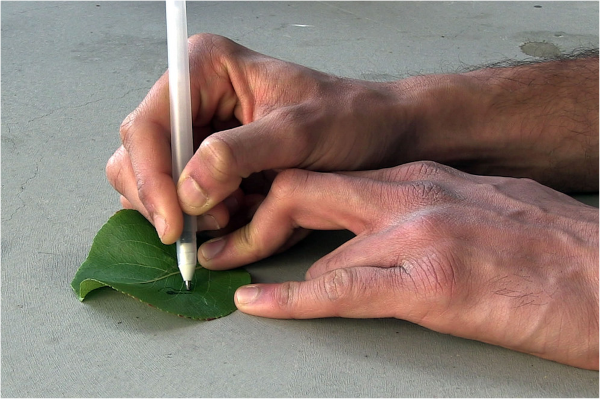Nanoengineers from the University of California, San Diego are making it possible for anyone to build sensors at any time with high-tech bio-inks that react with several chemicals, including glucose.
The team filled traditional ballpoint pens with special ink and was able to draw sensors directly onto a person’s skin in order to measure glucose levels and onto leaves to measure pollution.

“Our new biocatalytic pen technology, based on novel enzymatic inks, holds considerable promise for a broad range of applications on site and in the field,” said Joseph Wang, Chairman of the Department of NanoEngineering.
One major challenge the team faced was developing an ink that didn’t include harmful chemicals and biochemicals, but that could also function as the sensors’ electrodes and retain properties over long periods of time in storage.
In order to combat this issue, they decided on biocompatible polyethylene glycol as a binder and used graphite powder to make the inks conductive to electrical current. They also added chitosan, an antibacterial agent used in drug delivery applications and xylitol to stabilize enzymes that react with the kinds of chemicals the do-it-yourself sensors are designed to monitor.
DIY sensor applications
Wang and his team have been trying to make glucose testing easier for diabetics. With the high-tech pens, they were able to draw reusable glucose-measuring sensors onto a transparent material which included an electrode. Once they pricked a diabetic’s finger and put the blood on the sensor, the ink reacted with the glucose and the electrodes recorded the measurement which was then sent to a glucose-measuring device.

It is estimated that just one pen could hold enough ink to draw about 500 glucose sensors. The team also demonstrated the ability to draw the sensors directly onto a person’s skin and then allow them to communicate with a Bluetooth-enabled device that can gather data.
Another application Wang and his team worked on was pollution detection. By drawing sensors onto leaves, the ink could react with an industrial chemical called phenol and detect pollutants such as heavy metals and pesticides.
The team now looks to connect the sensors wirelessly to monitoring devices and learn how the sensors will perform in extreme temperatures.
The future
Skin and leaves aren’t the only surfaces the pens could be used on. Researchers envision sensors drawn directly onto smart phones for personalized and inexpensive health monitoring or onto building walls to monitor toxic gas pollutants. The sensors also could be used on the battlefield to detect explosives and nerve agents.
Story via University of California, San Diego.
Advertisement
Learn more about Electronic Products Magazine





